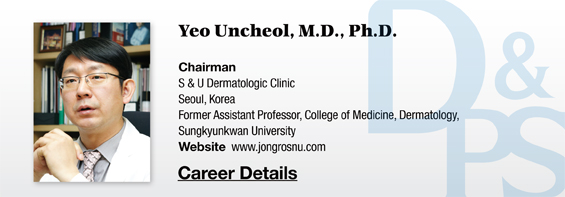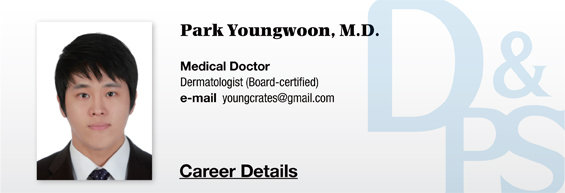Recent studies that used lower fluence levels rarely mentioned non-responders. This might be due to the fact that recent studies did not use global assessment grading system but the mean Melasma Area and Severity Index (MASI) score, or melanin index as a measure of clinical improvement. They also tended to compare mean values of groups rather than treatment outcomes of individual patients.
The non-responder rates reported in literature varied; 7.7%,15 26.9%,16 and 15%.18 Based on our clinical experience, we estimate that about 20% of all patients treated with gentle Laser toning parameters are non-responders.
The problem of non-responders has become a tiresome concern for clinicians. When faced with such a problem, less experienced doctors often make a common mistake of increasing the fluence of Laser toning until stronger response is seen. The fluence can be raised slightly for a short period of time, however, consistently raising fluence levels to induce strong tissue response should be avoided.
Treatment response may improve immediately but repetitive exposures to raised fluence levels have a higher risk of complications such as PIH, mottled hypopigmentation, rebound hyperpigmentation and worsening of melasma.
Laser toning has been shown to be very effective in melasma and many doctors favor this modality when treating melasma. However, the problem of non-responders remain with the safer and milder Laser toning treatment. Various methods have been developed to manage non-responders.
To achieve optimal safety and efficacy, clinical dermatologists should be well-versed in the variety of methods available for treatment of melasma and be able to apply and adjust suitable modalities to each individual patient with melasma. Let us take a look at various therapeutic methods that can be used alone or in combination with Laser toning to tackle the problem of non-responders.
[Advertisement] Ultra Skin/Pastelle – Manufacturer: WONTECH(www.wtlaser.com)
1. Combination Therapy with Laser Toning(excepting other Laser treatments)
A large percentage of non-responders can benefit from a therapy combining Laser toning with another modality. Most dermatologists can successfully treat non-responders through this combination therapy, and obtain superior outcome and a long-term remission in most of melasma patients. Recently, many studies on combination therapy are being published.
Topical whitening agent, one of the most conventional therapeutic modalities, is commonly used with Laser toning as combination treatment for melasma. Most commonly used whitening agents include azelaic acid and the triple combination (TC) cream containing 4% hydroquinone, 0.05% tretinoin, and 0.01% fluocinolone acetonide.18,19 Combining Laser toning with vitamin C iontophoresis20 or peeling agents16,21 has also been reported to bring favorable synergistic effects.
Whitening agents such as topical TC and azelaic acid are considered first-line therapy of melasma in evidence-based medicine.22 When used alone in clinical practice, however, they have many limitations such as low efficacy, low patient compliance and side effects including irritation. Combining whitening agents with Laser toning has been shown to overcome these limitations and achieve a superior outcome in previous studies.18,19
Vitamin C (ascorbic acid) is known to inhibit malanogenesis.23 Vitamin C, however, has poor delivery to the skin through both oral intake and topical application. Its unstable chemical structure makes it difficult to maintain stability in a solution form. Various methods have been used to overcome these problems, the most common of which is vitamin C iontophoresis.
Vitamin C iontophoresis is widely used as a basic treatment of melasma. Among clinicians, the synergistic effect of combining vitamin C iontophoresis and Laser toning has been recognized for a long time. Lee et al.20 found that the thermal effect of Laser increased blood circulation of the skin and improved penetration of topical vitamin C.
Chemical peeling is an important treatment of melasma that has been in long use due to its effective removal of melanin in keratinocytes and acceleration of epidermal turnover.24 Therefore, some doctors argue that Laser toning and peeling make an excellent combination therapy. They believe that pigments destroyed by Laser toning can be more effectively removed with a chemical peel. However, a chemical peel and Laser toning both directly inhibit tyrosinase which may create an overlap.25
The combination of chemical peel and Laser toning has been in common use for a long time and we have also experienced excellent efficacy using this method in our practice. On the other hand, this combination may have a higher risk of complications compared to monotherapies.21 One should also be aware of a report that superior effect of this combination is only short-lived and the combination brings an outcome similar to that of Laser toning used alone after about 10 treatments.16
This combination therapy can result in various levels of efficacy and complications depending on the doctor’s experience and methods of combination. Therefore, it is advisable to have deep knowledge of the peeling agents and Laser properties before using this combination.
-To be continued
References
18. Jeong SY, Shin JB, Yeo UC, Kim WS, Kim IH. Low-fluence Q-switched neodymium-doped yttrium aluminum garnet Laser for melasma with pre- or post-treatment triple combination cream. Dermatol Surg 2010;36:909-18.
19. Bansal C, Naik H, Kar HK, Chauhan A. A Comparison of Low-Fluence 1064-nm Q-Switched Nd: YAG Laser with Topical 20% Azelaic Acid Cream and their Combination in Melasma in Indian Patients. J Cutan Aesthet Surg 2012;5:266-72.
20. Lee MC, Chang CS, Huang YL, Chang SL, Chang CH, Lin YF, et al. Treatment of melasma with mixed parameters of 1,064-nm Q-switched Nd:YAG Laser toning and an enhanced effect of ultrasonic application of vitamin C: a split-face study. Lasers Med Sci 2015;30:159-63.
21. Vachiramon V, Sahawatwong S, Sirithanabadeekul P. Treatment of melasma in men with low-fluence Q-switched neodymium-doped yttrium-aluminum-garnet Laser versus combined Laser and glycolic acid peeling. Dermatol Surg 2015;41:457-65.
22. Torok HM. A comprehensive review of the long-term and short-term treatment of melasma with a triple combination cream. Am J Clin Dermatol 2006;7:223-30.
23. Ros JR, Rodriguez-Lopez JN, Garcia-Canovas F. Effect of L-ascorbic acid on the monophenolase activity of tyrosinase. Biochem J 1993;295(Pt 1):309-12.
24. Briganti S, Camera E, Picardo M. Chemical and instrumental approaches to treat hyperpigmentation. Pigment Cell Res 2003;16:101-10.
25. Usuki A, Ohashi A, Sato H, Ochiai Y, Ichihashi M, Funasaka Y. The inhibitory effect of glycolic acid and lactic acid on melanin synthesis in melanoma cells. Exp Dermatol 2003;12 Suppl 2:43-50.






















